Download Printable Strawberry Growing Guide »
If you’re looking to add fruit to your container garden, our first recommendation is strawberries! Once established, the plants are relatively easy to care for and they come back year after year. Plus, nothing beats that first ripe strawberry straight off the vine in early summer. Let’s grow some strawberries!

Table of Contents
Do strawberries do well in pots?
Yes! Growing strawberries in containers is just as easy as growing them in-ground or in a raised bed—you just need to make a few tweaks to the soil and watering.
Benefits of growing strawberries in containers
Strawberries do well in containers because:
- The plants don’t take up a lot of room
- You can control how much sunlight the plants get
- The plants can get excellent drainage.
The one drawback is that because there is less room for the plants to sprawl, you may get fewer berries from container growing.
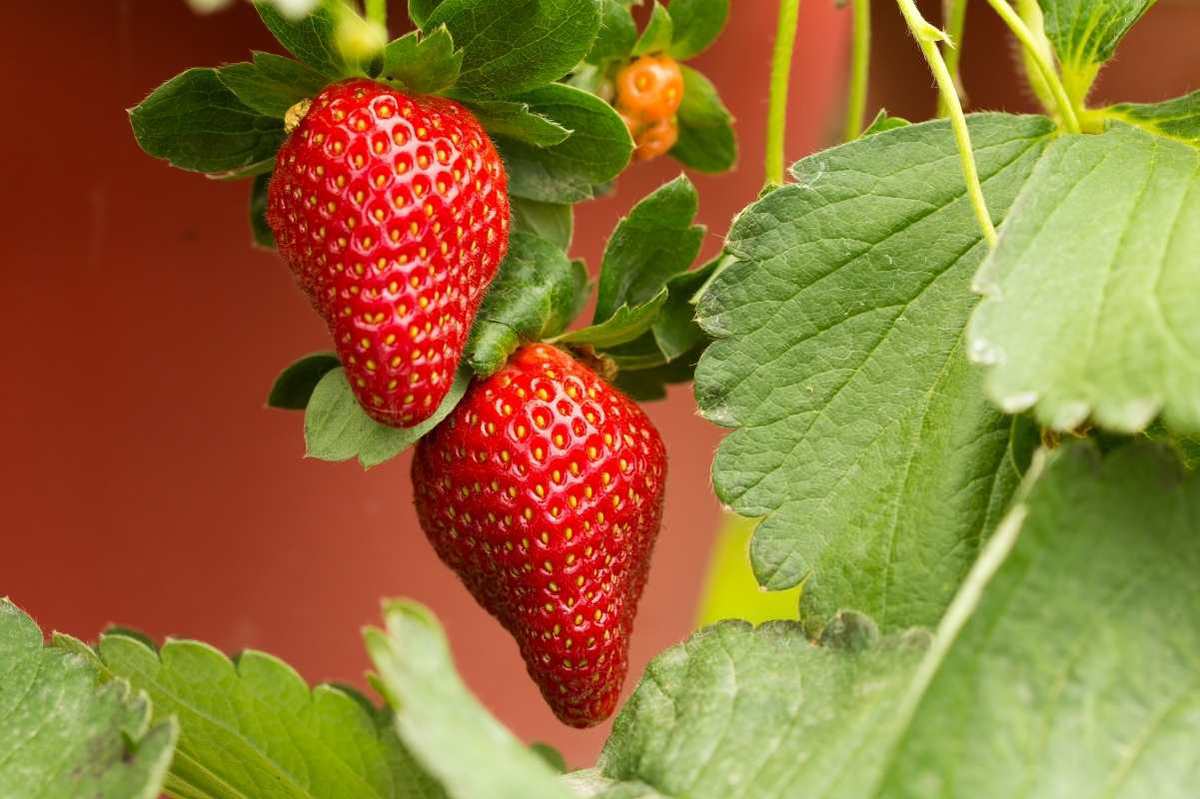
Best varieties for growing strawberries in containers
In general, everbearing or day-neutral varieties of strawberries will do the best in containers. Since you’re growing in containers, we assume you only plan to have a handful of plants. In that case, June-bearing varieties will not give you nearly as many strawberries, as they only produce one harvest. Look for everbearing or day-neutral plants instead. Alpine strawberries are compact plants with small berries, and are also suitable for container growing.
How big of a container do strawberries need to grow?
You can fit about three strawberry plants per square foot of soil, so the size of your container depends on how many strawberries you want to grow. You can also grow berries in a strawberry jar, or strawberry pot, which is a plastic or terracotta pot that has pockets wrapping around the sides. These are designed specifically for growing strawberries in containers, and can fit one plant per pocket.
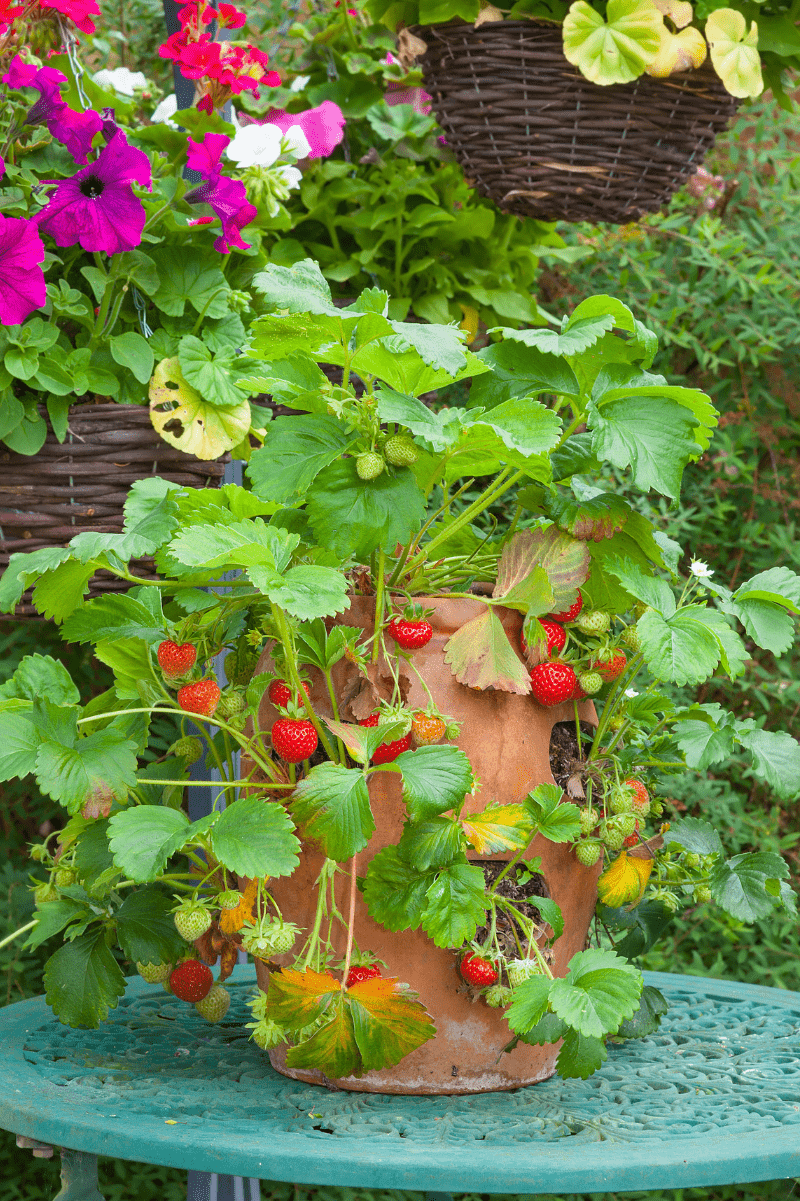
Do strawberries have shallow or deep roots?
Strawberries have relatively shallow roots, so you don’t need to be too stressed about the depth of your strawberry planter. As long as there are about eight inches of soil, you should be fine.
What containers are good for strawberries?
If you’re using a traditional pot for strawberries, choose a light-colored container to keep the roots cool.
But don’t feel limited to standard garden containers! We’ve seen some mega-creative ideas out there for growing strawberries, including:
- Strawberry plants spilling out of a hanging basket
- Used as a border plant in decorative planters
- Planted in window boxes or deck boxes for easy harvests in a moment
- Strawberries tumbling out of upcycled old gutters attached to a fence or wall
- Strawberry towers made out of stacking pots
- And of course, in those classic strawberry pots on a porch or patio
Growfully Protip
No matter what container you use for strawberries, make sure it has good drainage holes!
 Do strawberries need a trellis?
Do strawberries need a trellis?
Nope—strawberries prefer to sprawl horizontally, rather than vertically.
Where to put your strawberry containers
Strawberries need full sun. For big, juicy, delicious berries, the plants need eight hours of direct sunlight daily. Five hours of sun is the absolute minimum, but you’ll get a smaller yield. Make sure that your strawberry containers aren’t too close to large trees, walls, or other structures that will cover them in shade.

What kind of soil do strawberries need?
Strawberries grow best in sandy soil that drains well and is rich in organic matter. A good, well-draining potting mix blended with compost will do the trick.
Like most berries, they prefer more acidic soil, with a soil pH between 5.5 and 6.5. If your potting mix isn’t acidic, you can use an organic acidifying fertilizer such as Berry-Tone from Espoma.
How to plant strawberries in containers
There are two ways to plant strawberries—from starts or bare-root, dormant plants.
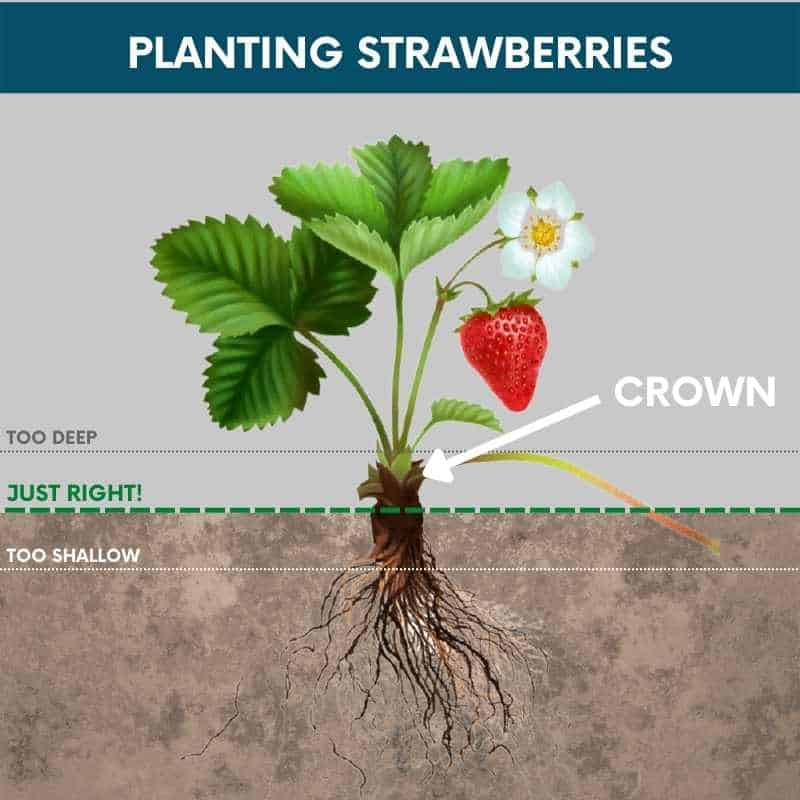
To plant strawberry starts:
- Dig a hole large enough to fit the root ball.
- Set the plant in the hole and backfill with potting mix. The top of the plant should be just above the soil line.
- Water and add mulch around the plant.
 To plant bare-root strawberry plants:
To plant bare-root strawberry plants:
- Soak the plants in room temperature water for 2-3 hours.
- Dig a hole that is big enough to fit the roots. Mound up dirt in the hole.
- Spread out the roots and lay them over the top of the mound, with the crown facing up.
- Fill the soil over the roots, so that the crown is neither buried completely nor completely above the soil line.
- Water and add mulch around the plant.
Watering, mulching, and fertilizing
Watering
Strawberries need a decent amount of water, but they really hate wet roots. Make sure that your containers have sufficient drainage before planting.
Make sure your strawberry plants get about an inch of water per week at the start of the season. Once the flowers have bloomed and the weather turns hot, you may want to increase this to two inches of water a week. Do not allow the soil to dry out, as this will stress the plants.
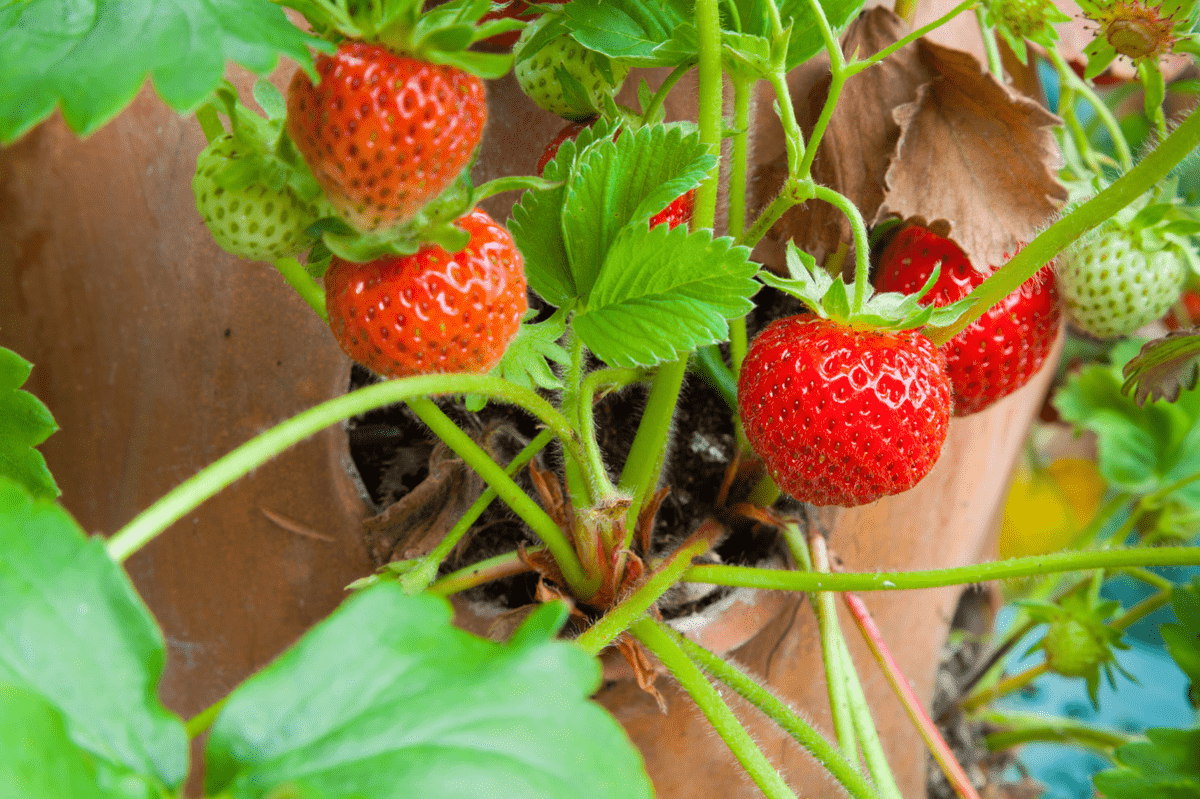
Mulching
A good layer of mulch is vital to healthy, productive strawberries. The mulch helps the soil retain moisture, and keeps the plants cool in the summer and warm in the winter. It also helps keep the berries disease-free by providing a barrier between the fruit and any bacteria or pests in the soil.
The best mulches for strawberries are straw, pine needles, or shredded leaves.
Fertilizer
Strawberries are heavy feeders, so we recommend extra fertilizer during the growing season. We use a slow-release fertilizer twice a year—Berry-Tone from Espoma both gives the plants the nutrients they need and acidifies the soil. We also include strawberries in our regular biweekly fertilizing with a liquid fertilizer blend of fish emulsion and liquid kelp.

Download Printable Strawberry Growing Guide »
What do I do with those runners?
The long stems spreading out from the strawberry plants are called runners. If given the chance, they will create baby plants at their ends. Clip all the runners that develop on your container-grown strawberries so that the plant can focus on root growth and producing more berries.
Will strawberry plants produce fruit in the first year?
They will, but we recommend pinching off all the blooms that come up in the first year. We know that’s hard when you want a taste of those home-grown berries, but we promise your plants will be stronger for it. Plus, the fruit will be larger and more flavorful next summer!
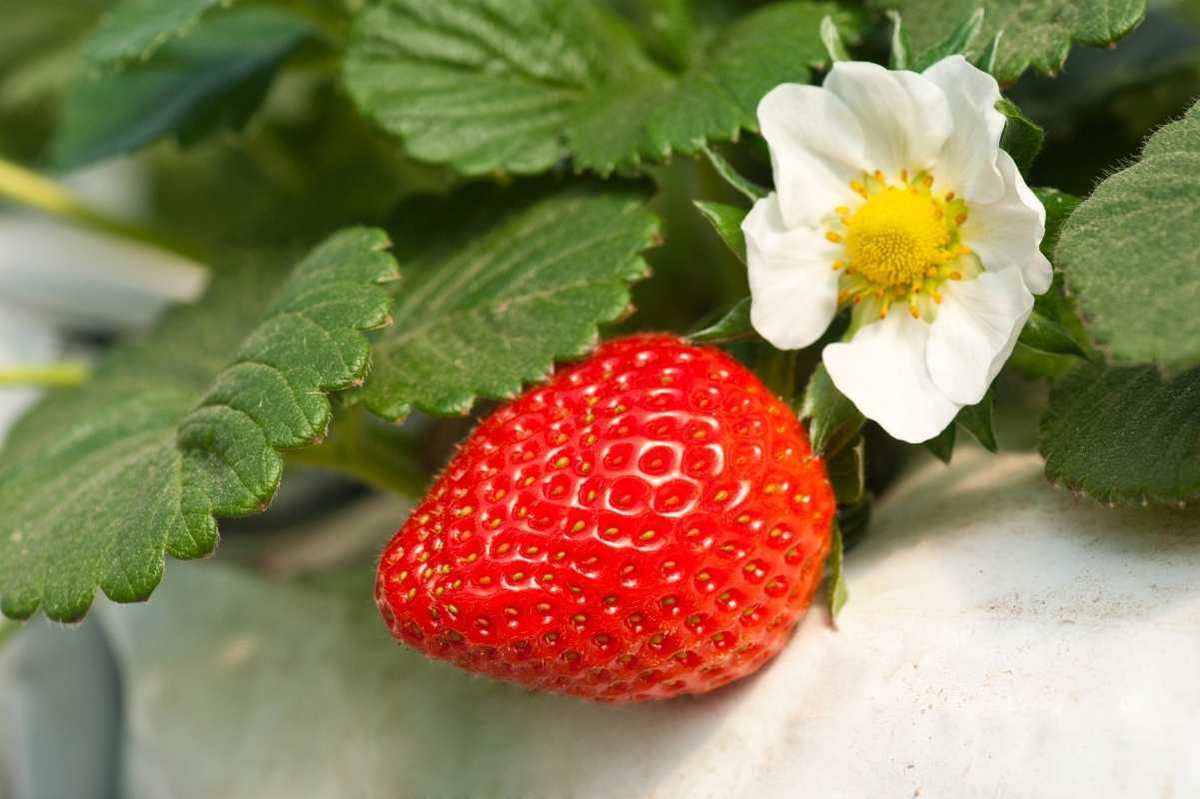
How to harvest strawberries
Strawberries will be bright red when ready for harvest. You may need to peek under the leaves to find them. Twist gently to remove the berries from the plant.
Winter care of strawberries
In the winter, strawberries go dormant. In a warmer climate, strawberries will not need much care during the winter months. In a mild or cool climate, watch for when the plants have gone dormant and the foliage has died back. When the first few inches of soil freeze, put a heavy layer of mulch over the plants. Move the containers to a covered spot to protect the plants from harsh winds and storms. An unheated garage or a covered porch will do the trick. If you don’t have a covered spot, move the containers against the side of the house so that they get a little warmth from your home.

Troubleshooting growing strawberries in containers
Some common issues that can affect strawberries include:
- Slugs will leave tiny holes in the berries, especially near the stems. Manually remove them from the plants, or set a grapefruit trap to catch them overnight.
- Birds enjoy eating strawberries. You can spread bird netting over the pots when the berries are ripe to keep the birds out.
- Read more about pests, molds, and fungal diseases that can affect strawberries in our larger strawberry guide.

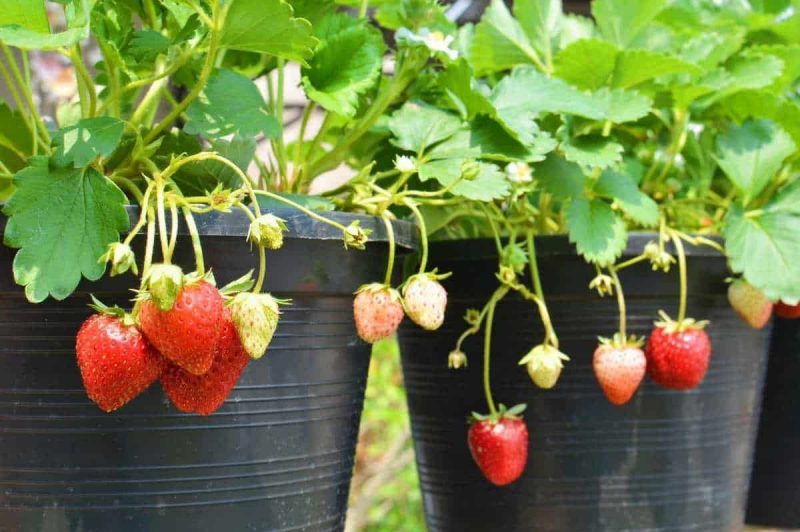
 Do strawberries need a trellis?
Do strawberries need a trellis? To plant bare-root strawberry plants:
To plant bare-root strawberry plants:




